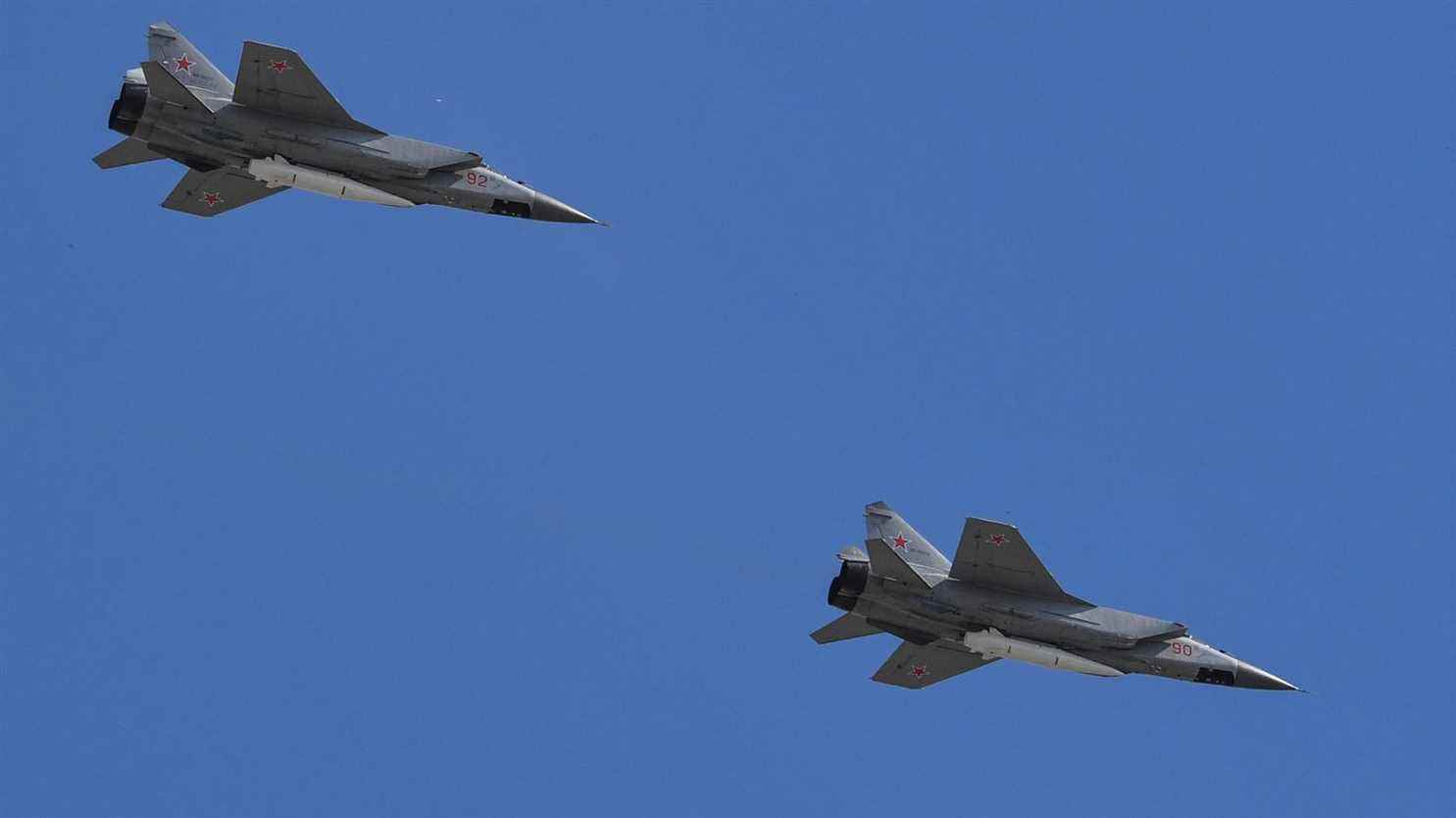A remedy announced as a first. The Russian army assured, Saturday March 19, to have fired a hypersonic missile in Ukraine, a weapon qualified as“invincible” by Vladimir Putin. It was used to destroy an underground warehouse of missiles and ammunition of the Ukrainian army aviation in the locality of Delyatin, in the west of Ukraine, only about sixty kilometers as the crow flies from the Romanian border.
>> War in Ukraine: follow our live
At the moment, only the Russian Defense Ministry has published a video of the hitbut the Ukrainian Air Force spokesman confirmed that “the enemy carried out strikes against our depots (…) There was damage, destruction, detonation of ammunition”. What do we know about this type of weapon? Why does Russia use it? Response elements.
1What are the characteristics of this missile?
The hypersonic missile used by Russia in Ukraine is called Kinjal, “ponion” in Russian. Weighing 4 tonnes and approximately 7.4 meters long, it notably equips the MiG-31 fighter planes. “Hypersonic weapons are much faster than traditional cruise missiles or ballistic missiles”explains to franceinfo Héloïse Fayet, researcher at the center for security studies at the French Institute for International Relations (Ifri). “Hypersonic missiles also have greater ability to change course as they progress towards the target.”
Dropped from an airplane, a Kinjal missile will begin to have a bell-shaped trajectory, then will head towards its target at a speed that can reach, according to Moscow, Mach 10, or 12,000 km / h. Its maneuverability makes it extremely difficult, if not impossible, to intercept, although some Western military experts believe that Russia may exaggerate the capabilities of this weapon.
▫️Destruction of a weapons depot of the Armed Forces of Ukraine by high-precision missile weapons strike. We can see the exact hit of an underground hangar with weapons and ammunition. pic.twitter.com/sKTF46Tdb0
— Минобороны России (@mod_russia) March 19, 2022
Tested in 2018 by Russia, the Kinjal missiles during the tests hit all their targets at a distance of up to 1,000 to 2,000 km, according to the Russian Defense Ministry. These hypersonic weapons are capable of evading defense systems such as the American missile shield in Europe. In addition to the Kinjal, Russia has the Avangard, a hypersonic missile capable of reaching 27 times the speed of sound, or the Poseidon, an underwater drone that can travel at a speed of 60 to 70 knots (111 to 129 kph).
2What is Russia trying to do through its use?
For the moment, Russia has not detailed the reasons for using the Kinjal. For the researcher Heloise Fayet, the weapon is “excessive” relative to the target, and the Russian army could have made do with a conventional ballistic missile like the Iskander, which has been in use since the beginning of the conflict. “We can imagine that the Kinjal is used due to a depletion of stocks of traditional short and medium range missiles”, she contemplates.
Another supposition: to show that Russia is indeed present on the ground, while its army does not yet seem to have complete control of the sky after 23 days of war, and that the Ukrainian anti-aircraft defense still manages to inflict losses on Moscow.
“The Russians may want to show that they have even more powerful weapons in reserve. It’s a way of hardening the tone.”
Héloïse Fayet, researcher at Ifriat franceinfo
“For Russia, the objective is to remind that it has certain unique weapons in the world. In terms of power, demonstration, it is communication and it is a response to the United States which wants to provide systems anti-aircraft defence” to Ukraine, adds Xavier Tytelman, military expert, with France 2.
Moreover, the Kinjal missile is a dual weapon. It can have a conventional charge or a nuclear charge. The strike of the underground warehouse of Deliatine was conventional, but it could make it possible to revive the nuclear threat maintained by Russia.
Last hypothesis: simply check if the missile works well. After commissioning in 2018, this is the first time that the Kinjal has been used under operational conditions, according to Moscow.
3Could this use mark a turning point in the war?
For Russian military expert Pavel Felgenhauer, the use of Kinjal does not give Russia a strategic advantage in Ukraine. “Basically, it doesn’t change the battlefield, but it certainly has an effect in terms of psychological propaganda, to scare everyone“, he told Agence France-Presse.
An analysis shared by Héloïse Fayet. “It is more a vector of communication for the Russian army to counter everything we have read about its mired in the conflict than a strategic evolution”, she believes.
“It is not certain that Western countries will react to a single use. On the other hand, if the Kinjal is used again in war, it will be much more significant.”
Héloïse Fayet, researcher at Ifriat franceinfo
Because if Russia is the first country in the world to have developed hypersonic armaments, their commissioning has led other States to accelerate their hypersonic programs, leading to an arms race in this field. China has already tested such weapons. Other countries, such as the United States or France, continue to develop them.
The real stakes of hypersonic weapons go beyond “very largely technical questions”recalls the editor of the journal International Defense and SecurityJoseph Henrotin, in a note for Ifri written in 2021. More than their speed, it is their ability to change direction at any time that could change the rules of conflicts, “revaluing surprise, brutalizing decision-making cycles, blurring perceptions and increasing States’ freedom of action”, he warns.
